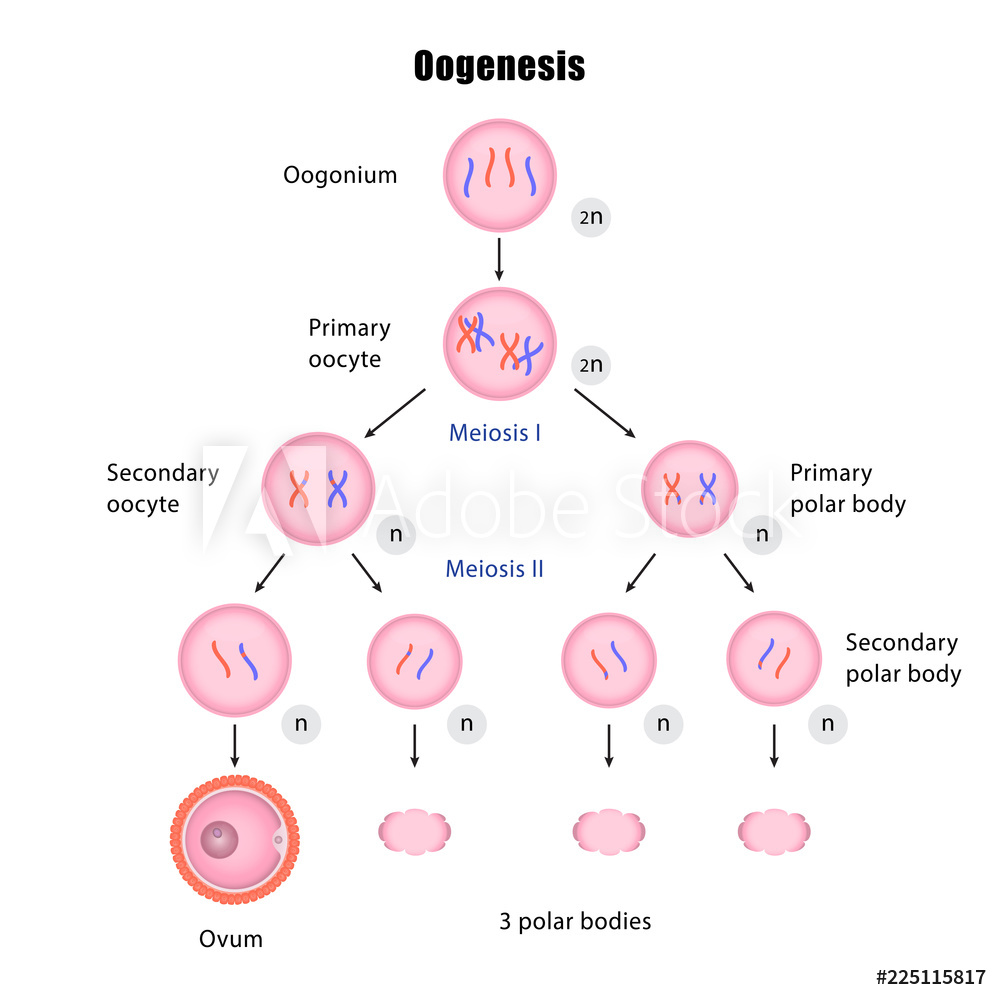
Oogenesis also known as ovogenesis or oögenesis is the differentiation of the ovum(egg cell) into a cell competent to further develop when fertilized. Oogenesis start with a single germ cell called an oogonium by which it undergoes mitosis so as to increase in number resulting to one up to two million cells in the embryo. Its different from spermatogenesis in several ways.
In which the gamete formed by oogenesis contains all the materials needed to start and maintain metabolism and development. Oogenesis is also responsible to build a stock of cytoplasmic enzymes, organelles, mRNAs and metabolic substrates.
Oogenesis leads to the formation of a single egg cell per ovule as it occurs within embryo sac. It starts within a germ cell called an oogonium, by which this cell undergoes mitosis to increase in number, eventually resulting in up to one or two million cells in the embryo. Meiotic progression seems to be an essential part of oogenesis. Oogenesis undergoes three stages which are:
- Multiplication phase
- Growth phase
- Maturation phase
Multiplication phase
In multiplication phase the primordial germinal cells divide repeatedly to form the oogonia, then it multiply the mitotic division and form the primary oocytes which pass through growth phase.
Growth phase
The growth phase of the oogenesis is much longer than the growth phase of spermatogenesis. In the growth phase the size of the primary oocytes increases enormously. Large amount of fats and proteins becomes accumulated in the primary oocytes inform of yolk and due to its heavyweight, it is usually concentrated towards the lower portion of the egg forming the vegetative form. Cytoplasm portion containing the egg pro-nucleus remains often separated from the yolk and occurs to the upper side of the egg forming the animal pole. In few oocytes(amphibia and birds) the mitochondria become accumulated at some place in the oocyte cytoplasm and form the mitochondrial clouds. Tremendous changes also occurs in the nucleus of the primary oocyte during the growth phase. After the growth of cytoplasm and nucleus of the primary oocyte, maturation phase takes charge.
Maturation phase
This phase is accompanied by maturation or meiotic division. The cytoplasm of the oocyte divides unequally after the meiotic division to form large haploid egg with three small haploid bodies in the end. Most of the cytoplasm contained are allowed by this unequal divisions which reserve food material that is sufficient for the developing embryo.